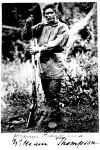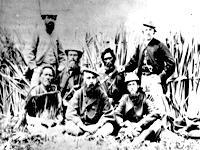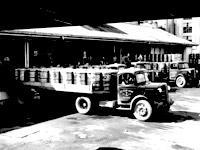Waharoa
Waharoa is a small town of around 105 people. It is located approximately 7km north-east of Matamata, New Zealand. Waharoa sits on a ridge above the Waitoa River and was originally settled by Te Waharoa, the principal leader of Ngati Haua, who established his pa at this site in 1830.
In 1835 an Anglican mission was built at the site and a school was established within the mission a short time later. Te Waharoa’s son, Tarapipi, was one of the first children to attend the school.
The district was relatively peaceful until the killing of Te Hunga, a Māori leader of the Nga Hinuia tribe, on Christmas day in 1835.
War raged and during the fighting Te Waharoa took authority of the mission and the safety of the missionaries.
Another mission called the Catholic Mission began a few years later in 1841 but Waharoa was still very unstable and intermittent fights were still occurring in the area. It was more peaceful at Te Awamutu and so they decided to shift the mission to Rangiaowhia near Te Awamutu three years later. In 1861 a man called Joseph Clifton Firth brought Te Waharoa’s land which was over 56,000 acres. Firth built a cheese factory and dairy company.The township of Waharoa developed around these industries.
On the 28 June 1914 World War 1 started. 18,500 New Zealand soldiers were killed and 40,000 were injured badly. Waharoa was abandoned when World War 1 broke out and remained that way for 15 years till Te Waharoa returned to his homeland, Waharoa.
In the early 2000s two cheese factories opened at Waharoa the Kaimai Cheese Company, a small specialty cheese factory, and the Open Country Dairy Company(OPDC). OPDC now has over 50,000 trucks travel around the North and South Island from its factory in Waharoa.
Nowadays the community is small but it is close knit. Most of the residents of Waharoa are from a single iwi although that is not a rule.
There is one primary school in Waharoa called Te kura o Waharoa school which recently celebrated their 125th anniversary. There are less than 100 students in the school and approximately 4 to 5 teachers.
Waharoa also has a service station, an airfield which serves Matamata, a Four Square store, and a few cafes which are often frequented by people passing through and looking for an easy place to stop.
Interview with Fred Haimona - Ngati Haua, Waharoa
1.Fred, what is your relationship to Waharoa?
This is where my ancestors lived. My tribe is Ngati Haua after an ancestor whose name was Haua and who lived here. One of his descendants was a famous chief called Waharoa whose son was Wiremu Tamihana, another famous chief. Everyone from Waharoa descends from them.
2.What is your relationship to my dad and what can you tell me about my family’s connections to Waharoa?
My grandmother’s name is Kahukoka (Gase) and your dad's grandmother is Weta, they were both sisters. Weta is also your mother's great grandmother.
3.Who built the pa site at Waharoa and when?
Waharoa Paa is called Raungaiti and was built in 1927 after moving from Kutia Paa which is 1 km north west of Raungaiti. It was built by the people. One of the reasons it moved was to be closer to the new highway being built.
4.How did the town Waharoa get its name?
After two famous chiefs, one called Te Waharoa and his son Wiremu Tamihana who was also called Te Waharoa.
5.What can you tell me about Te Waharoa?
A famous writer called Gorst called him the “Napoleon of the east coast”. He was captured as a child from his home on Mangakawa just east of Waharoa and taken into slavery. When they let him go he returned home and soon after became paramount chief whilst still young. He built up Ngati Haua to be a feared people and fought many famous battles, usually against great odds.
6.Who are Te Waharoa’s sons and what families are descendants of Te Waharoa in our town today?
Wiremu Tamihana and Te Arahi. Everyone in Waharoa and across Ngati Haua are descendants of mostly Wiremu Tamihana.
7.Where did Te Waharoa come from?
When you look east from Waharoa you will see three hills. The one at the end of Peria Road is Tapui and the next one out from Waharoa is Mangakawa and the next is Ruru. Te Waharoa was born on Mangakawa.
8.Was his tribe the toughest? Was he ever a slave?
Yes, the tribe was feared. In the famous battle of Taumatawiwi, Te Waharoa’s army of 500 beat an Army of 2000. The battle took place at Karapiro. The name Karapiro is reference to this battle. It means rotting bones, which is another story.
9.How did he die?
There were many epidemics that killed a lot of Māori in the 1800’s. He was killed by one of the great epidemics. Māori were foreign to these diseases and could not counter it. The name of our Marae is Raungaiti which refers to the great epidemics. Rau (heap of people) nga (some people) iti ( a small lot of people).
10.Who became the leader at Waharoa after Te Waharoa died?
His son, Wiremu Tamihana, who last year was named one of the top 10 in New Zealand’s history, alongside Sir Edmund Hillary, Kate Shepherd etc. Yes, this chief from Waharoa, one of the great New Zealanders.
11.When was the Cheese factory built at Waharoa and why did they choose Waharoa as their location?
The cheese factory was just recently built about 2005. I believe they choose Waharoa because of it’s location; close to the railway tracks and there were already a lot of buildings they could utilise after the milk factory had closed.
12.What else can you tell me about Waharoa?
The school at Waharoa has just had a 125 year celebration. Wow, that’s old. Almost all of our people over the 125 years have attended that school.
Photo credits:
Kinder, John, 1819-1903. Wiremu Tamihana Tarapipipi Te Waharoa with a double barreled shot-gun. Ref: 1/2-019840-F. Alexander Turnbull Library, Wellington, New Zealand. http://natlib.govt.nz/records/22869781
Interview with Wiremu Tamehana Te Waharoa on the banks of the Waihou River, regarding the purchase by Josiah Clifton Firth (Hohaia) of the Matamata Estates. Firth family : Papers. Ref: MS-Papers-1491-09/1-3-04. Alexander Turnbull Library, Wellington, New Zealand. http://natlib.govt.nz/records/22489854
Trucks of the Waharoa NZ Co-op Dairy Co. Original photographic prints and postcards from file print collection, Box 14. Ref: PAColl-6585-65. Alexander Turnbull Library, Wellington, New Zealand.http://natlib.govt.nz/records/22505653







